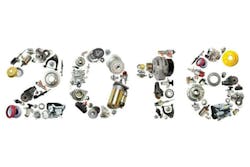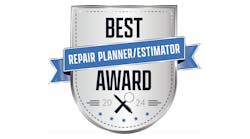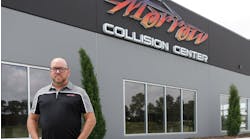It’s a new year and this is a new home for me here at FenderBender, but many of the challenges I see in the industry (and I witness in your shops) are still very much the same.
Many of us know each other already. I’ve visited a lot of your shops, and seen even more of you at events around the country. And that’s where this first column comes from—and where future ones will, too. This column comes from you and the challenges you face, day in and day out running your business. And that will be the same each month, as we work together to make improvements in your business and this industry.
1. A better rekeying solution. Wouldn’t it be great if your existing estimating systems could rekey insurer-produced paper estimates for us? Well, they can. We have the software options to do this, whether it’s CCC or Mitchell or Audatex; they can do it, if the insurance companies were willing to give electronic versions of their original estimates. Talk to any higher-up with insurance carriers, and they’ll say it’s common practice to share those. Trickle down, and it’s just not happening. But it needs to. There’s no reason that this can’t start right now.With that in mind, this is my wishlist for 2016. Some items on it might be new. Some won’t be. Either way, these are 10 things that we need to change, and change now:
2. Clear paint materials definitions. Our industry has changed. Some vehicles today, you might need $200 worth of seam sealers and adhesives, and that should be itemized on the estimate as a part—and you should be fully reimbursed for all of it. We need definitions to say, “This is paint materials, and this is not.” No more arguing. No more haggling or worse, accepting less than what you deserve. That’s not as difficult as it seems. I’ve done research on this. A friend of mine, Jim Compton with J. Hunter & Associates, has done a lot of research on this. We have the information. What we need is to have someone take up this cause, whether it’s the Collision Industry Conference or CIECA or someone else. I’m willing to help; Jim would be a perfect person to head this up. There’s no reason not to get this done.
3. Improved access to training and OEM information for heavy-duty truck, bus and RV repairers. This should be very obvious, and it’s really simple: These are the guys who fix vehicles that might have 50 kids on it the next day. It’s scary the lack of access they have to training, education and OEM information, and it’s not their fault.
4. A more sensical dealer-to-shop parts invoicing system. Right now, one of the most time-consuming things in our industry is rekeying parts invoices from dealerships. It can take hours upon hours each week, right? Every time I talk to the management system companies, they say they have the ability to upload those invoices directly, but the dealership software doesn’t play nice. That needs to change.
5. The ability to select certain items in an estimating system. I would love to see the estimating systems work directly with certain companies, like, say, 3M, and have a list price for seam sealers, weld-through primers, double-sided tape—all of it—right there in the estimating system. Then if you need two tubes of seam sealer for a job, you just select it and it goes right on the estimate. Sounds easy, right?
6. Pre-repair and post-repair vehicle scans becoming the standard. We cannot fix a vehicle properly today, nor diagnose the image, if we don’t scan it before and after. The average vehicle today has more than 100 million lines of code, on average. The slightest things can affect those systems, many of which are critical for driver safety. From my own surveys and studies, only about 47 percent of shops are doing these scans today. That’s scary.
7. Both shops and insurers research OEM procedures during an estimate. Speaking of scary: In my company’s “Who Pays for What” survey, only 19 percent of respondents said they always research OEM data for every vehicle. That’s not acceptable, for shops or insurers. Everyone should do it as part of the estimate on every vehicle.
8. More shop data to make informed decisions and initiate change. That’s what my aforementioned survey is all about. We need to work together to create awareness in this industry. We can’t make informed decisions on an island.
9. Insurers need to stop penalizing shops for too many lines on estimates. The way it works, right now, is that when you scrub an estimate through a third-party system (like Mitchell’s, CCC’s, ALLDATA’s, etc.), the information it comes back with is based on picking up on a word that’s in an estimate. So, those words have to all be in there—line by line—to come back correct. You can’t omit anything, or the systems won’t pick up everything you need to do to fix that vehicle. But an insurance company will tell you that you get penalized on your DRP score for having too many lines on your estimates. See what I’m getting at here? Our job is to fix vehicles properly, and we can’t do that if we omit items on estimates because we’re worried about our DRP scores being hurt.
10. Increased OEM transparency to help shops and insurers understand the “why” behind their repair requirements. A couple examples: Toyota requires a zero-point calibration on vehicles; Honda calls them OCS resets; for Kia, it’s WCS resets. We get caught in the middle, as shops, trying to explain to insurers why we need to do it. We need to create the dialogue between all three parties to better explain why certain things are required—not just recommended. We need that forum where we can have open, transparent discussions that are informative and educational, where all parties (OEMs, insurers and shops) agree what is the right thing to do and decisions are based on educated and factual documentation— not just opinions.
None of these things are overly daunting, right? Yet, think of the difference each would make. This industry—and your business—are as great as we want to make them. It’s time to start making changes. Like I said: It’s a new year. Let’s get going.




